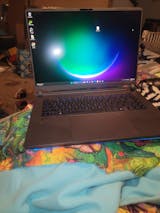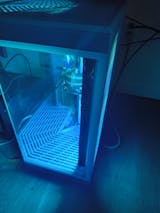Graphics Processing Units (GPUs) have grown in size and power as a result of developments in graphics processing technology. The exceptional performance of these high-end machines makes them very desirable among gamers and professionals. Nevertheless, with the increasing weight and size of these GPUs, one would wonder if they could do harm to your motherboard by tearing out the PCI Express slot.
Understanding the PCI Express Slot
You must be familiar with the PCI Express (PCIe) slot in order to grasp the danger. Graphics processing units (GPUs) and other hardware components can be connected to motherboards using the PCIe slot. The most common size for GPUs is the x16 slot, however they exist in a range of sizes (x1, x4, x8, x16). Engineered to support a specific weight and offer a secure connection, they enable the attached device to function.
The Weight of Modern GPUs
The massive heat sinks and elaborate cooling systems that modern high-end GPUs need to control the heat they produce frequently make them rather hefty. These devices can range in weight from a few pounds to several kilograms. The difference between this and earlier or cheaper versions is substantial.
Potential Risks to the PCIe Slot
The physical strain that these large GPUs place on the PCIe slot is the main cause for worry. There is a gradual but steady danger of the slot bending or even breaking with the GPU's weight. The stress on the PCIe slot can be increased if the computer is moved about a lot, thus this is something to think about in such case.
Manufacturers' Response and Solutions
The makers of motherboards and GPUs have acknowledged this problem and have released many fixes:
- Reinforced PCIe Slots: Enhanced PCIe slots, seen on many newer motherboards, are capable of supporting bigger graphics processing units (GPUs).
- GPU Braces or Supports: To alleviate pressure on the PCIe slot, these supplementary components offer further GPU support.
- Improved GPU Design: In an effort to reduce overall unit weight, several GPU makers have prioritized making lighter components or improving weight distribution.
Best Practices for Users
There are a number of things users may do to reduce the danger associated with loaded GPUs:
- Ensure Proper Installation: Verify that the graphics processing unit (GPU) is securely fastened to the casing and fitted into the PCIe slot.
- Use a GPU Brace: If the GPU you're using is quite hefty, you might want to think about getting a GPU brace.
- Avoid Moving the PC Unnecessarily: Transporting a computer, particularly one with a large graphics processing unit (GPU), requires extra care.
The PCIe slot on motherboards is often threatened by the weight of newer GPUs, however this threat is typically mitigated with current technology and careful handling. As GPUs have grown in size and weight, manufacturers have responded by making PCIe slots stronger and creating lighter GPUs. Using GPU bracing or supports and making sure your GPU is fitted correctly will further reduce danger for users.
While it is true that big GPUs pose a risk of damaging PCIe slots, such incidents are extremely rare when all necessary safety measures are implemented. In light of these difficulties, developments in graphics processing unit (GPU) and motherboard design are ongoing, guaranteeing that consumers may take pleasure in high-performance graphics without putting their systems through unnecessary stress. Protecting one's investment and making the most of one's GPUs is possible with a little bit of knowledge and some easy safety measures.















